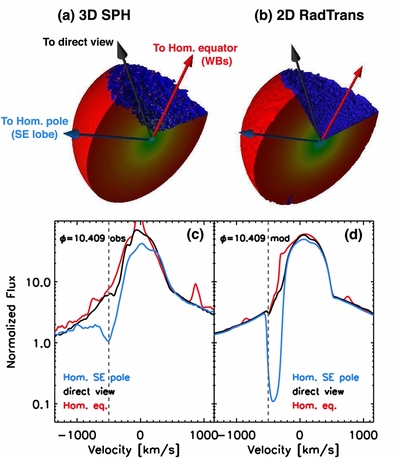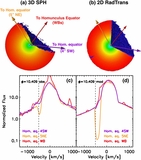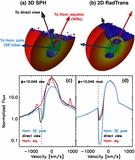Image Details

Caption: Figure 2.
(a) Three-dimensional rendering of hydrodynamical simulations showing the extended, optically thick primary wind (cyan/green/yellow/red) and the WWC zone (dark blue) at orbital phase ϕ = 10.409. Material in the primary wind is color coded to radius, i.e., red corresponds to material at larger radii (~75–150 AU) from the central stars, while green indicates material near the apex of the WWC region (<15 AU from η A for these phases). Material below the orbital plane has been removed, and the three-dimensional rendering slightly tilted, to allow better visualization of the dynamics of the inner regions. The physical scale corresponds to ~ ± 150 AU centered on the center of mass of the binary system. (b) Similar to (a), but for the two-dimensional radiative transfer models. (c) Observed spectra obtained at ϕ = 10.409 at the Homunculus equator (red), direct view at 138°(black), and Homunculus SE pole (blue). To aid the comparison between model and observations, the vertical gray dashed line corresponds to v = −500 km s −1. (d) Model spectra corresponding to these viewing angles. Note that the narrow emission seen in (c) around −40 km s −1 is due to nebular emission from the Weigelt blobs, and not included in the modeling.
Copyright and Terms & Conditions
© 2012. The American Astronomical Society. All rights reserved.






